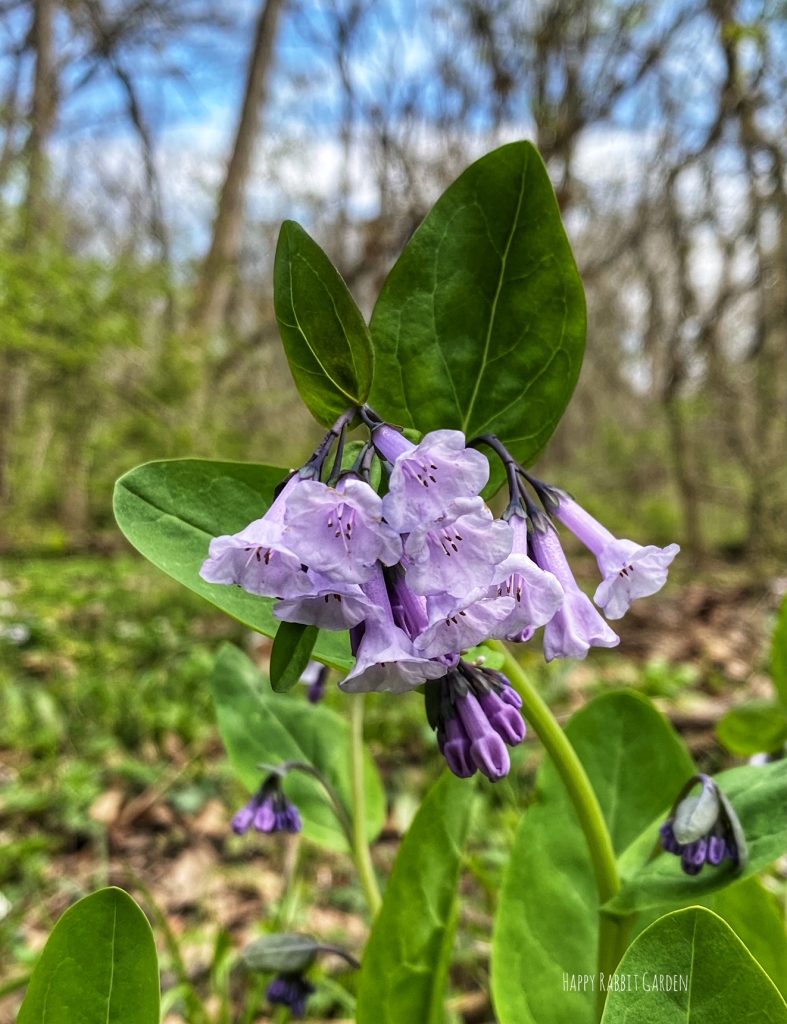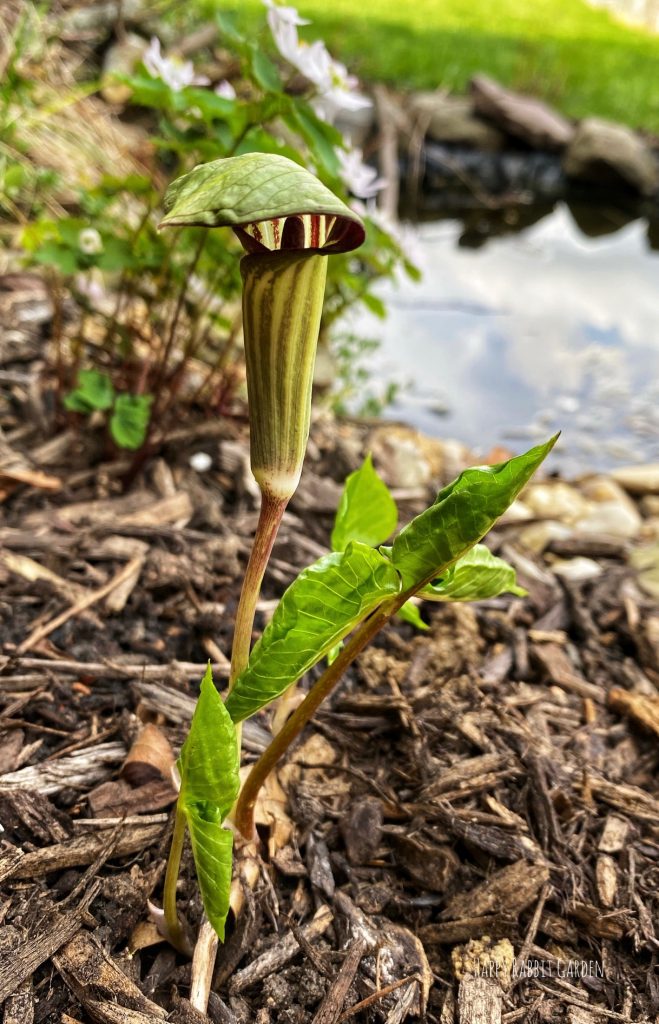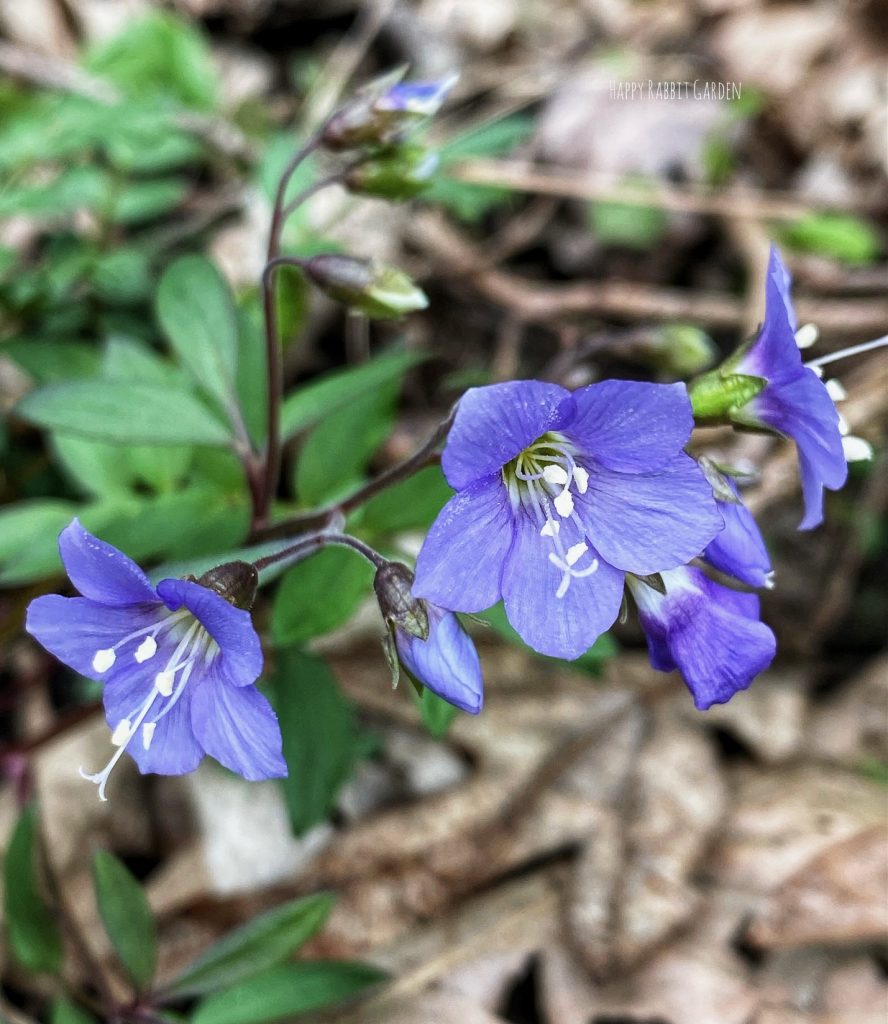
We had some very nice, warm weather this weekend. I think I could actually feel the stampede of people heading outdoors to try soaking up the sunshine before things cool off again. We’ve had a string of lousy weekends, with sleet, snow, rain, and general cold, so it felt pretty great to be outdoors, working in the dirt again.
I cleaned out a few of the beds, trimming back last seasons perennials, mulching, and weeding. I don’t care what grows in the grass (the bees have been enjoying our crop of dandelions already!), but I try to keep the beds free of all the creeping charlie, thistle, dandelions, and bittercress.
There’s been a lot happening in the raised beds lately. Our garlic is growing up quite well, and has been joined by the leeks that I started indoors the other month, along with some snow peas, yellow onions, carrots, lettuce, potatoes, and spinach. The crop of native plants that I grew from seed this winter have been thinned and moved to larger pots. And our asparagus crop is coming in. We harvested the first batch for dinner. Yum!
This weekend saw a trip to one of my favorite plant centers, Scioto Gardens, for some more native plants to add to the wildlife pond. I picked up some more Blue Flag Irises (Iris virginica), Jack-in-the-Pulpit (Arisaema triphyllum), an Oak Sedge (Carex pensylvanica), a Buttonbush (Cephalanthus occidentalis), and an Oak Leaf Hydrangea (Hydrangea quercifolia) to add to the native plants that already live around the pond. All told, so far, the plants we have living there play host to over 100 species of Lepidoptera (moths and butterflies)!

Other than just simply enjoying caterpillars, moths, and butterflies in the yard, I’m making an effort to add plants that host these critters for a reason. Just in North America, in the past 50 years, we’ve lost 1 in 4 birds. This isn’t just happening in exotic, tropical rain forest locations. It’s happening in our backyards. The birds we typically see here in Ohio are all experiencing a mass decline. And a huge reason for this is because they simply don’t have enough to eat.
Lots of my gardening friends put up bird feeders during the winter months, myself included. But the largest part of most birds diets are from bugs, especially caterpillars. Robins, woodpeckers, blue jays, wrens, warblers, sparrows, chickadees, cardinals, and many more rely on caterpillars for their survival. And they need to eat a LOT of caterpillars! According to Douglas Tallamy, (Professor of Agriculture in the Department of Entomology and Wildlife Ecology at the University of Delaware) a single pair of breeding chickadees must find 6,000 to 9,000 caterpillars to raise just one clutch of young.
We don’t make this easy on them. Think about the yards in your neighborhood, or around your area. What do they look like? Are there a lot of native trees and plants around, or is much of the area covered in turf grass? While it’s hard to imagine having a yard without at least some nice grass to enjoy, it doesn’t support the insects that our birds need to eat to survive. Add in all the chemicals we dump onto our lawns to kill of weeds and “bad bugs,” and it’s no wonder that birds are experiencing such a tragic decline.
As gardeners, there is so much we can do to help out the animals around us, and honestly, we need these birds and insects to thrive for our own well-being, too. Without insects pollinating our crops and flowers, we wouldn’t make it. We all need a healthy ecosystem to enjoy, and this spring is a great time to consider ways to make a difference in your own yards and areas.
I know I’ve talked about native plant species already, but it’s so important to add these to your landscape! There’s a great tool out there, The Native Plant Finder, where you simply type in your zip code, and the site will show oodles of native plants for you to try adding to your garden, along with a list of how many and which species of moths and butterflies they play host to. Search for native plant nurseries in your area and try out a few this year. You will be amazed at what shows up, seemingly overnight.
Another great way to help out our pollinators and birds is to replace all of our outdoor security lights with yellow LED bulbs. Bright, white traditional incandescent bulbs, and LEDs, attract insects and birds in far greater numbers than warm, LED bulbs. You’ll help these critters out by diminishing the light pollution in your area, since many of our birds migrate at night.
Finally, a really important way to help out our local birds and insects is to stop spraying our yards and gardens with chemicals. We all like a healthy lawn, and no one wants to grow a bumper crop of mosquitoes, but the chemicals that we use in our yards, like pyrethrin, do not simply target mosquitoes. They are also killing off our bees, butterflies, moths, and birds. According to the National Wildlife Federation, “There is no way for companies to spray these broad-spectrum insecticides in your yard without also killing other insects they come in contact with, including bees, butterflies, caterpillars, ladybugs, dragonflies and other beneficial insects, along with the mosquitoes.”
So what’s the alternative? In my own yard, I let the birds, dragonflies, and other mosquito-eaters to it, but if you’re really concerned, there are some safer methods to mosquito-removal. Bti (Bacillus thuringiensis israelensis), is a bacteria that will kill off mosquitos, leaving our pollinators to safely fly another day. Fill a bucket with some water, and drop in a Bti tablet. The mosquito larvae will eat the toxin, and die off, while other insects fly away free. When you are able to, however, it really is best to leave well enough alone. Our bird populations and other insects that rely on mosquitos will thank you. And your yard will be much healthier for it.
That was a lot of information, but hopefully it wasn’t too preachy. I am very passionate about using our yards to help out our local eco systems, but I realize that it’s a different way of gardening than many of us grew up with. It’s all about balance. Planting a favorite rose or having a nice bit of lawn for the kids to run around in is not a problem. It’s when we don’t provide anything else that our winged-neighbors start to suffer.
Hopefully this spring, you’re able to add in a new plant or tree to your landscape that once grew there naturally. Maybe you just have a small porch and no yard at all- you can still add a pot of milkweed to that doorstep! It’s a sad truth that no one is going to fix this situation for us. If we want our planet to survive, it’s up to us to do the work. But we can make a very big difference, one plant at a time! Happy gardening!

